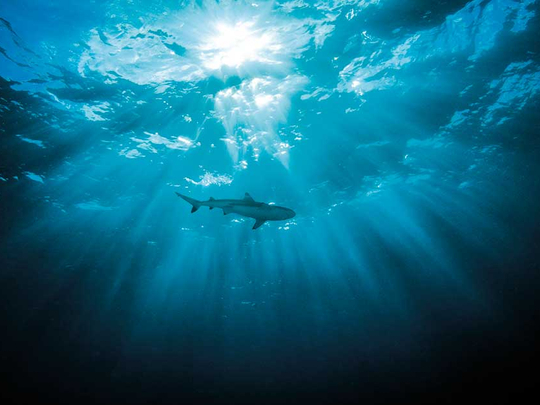
Abu Dhabi: The Arabian Sea and adjacent waters are home to some of the most threatened chondrichthyan fish (sharks, rays, and chimaeras) populations in the world, according to a study.
The results from the 2017 IUCN (the International Union for Conservation of Nature) regional red list assessment of 153 species of Chondrichthyes have revealed this alarming trend.
The assessment was part of the result of the workshop and researches that commenced in February 2017, which was organised by the Environment Agency-Abu Dhabi (EAD), in collaboration with the IUCN and Shark Specialist Group (SSG), said an EAD press release issued on Tuesday.
The workshop and researches evaluated the extinction risk status of sharks, rays and chimaeras found in the Arabian Sea and its adjacent waters (Red Sea, Gulf of Aden, and Arabian Gulf) for the IUCN Red List of Threatened Species.
The assessment highlights the need for urgent action to conserve populations and habitats, because more than half of the species (78) considered threatened with an elevated risk of extinction within the region. A further 27 species were assessed as being close to entering a threatened category in the near future. Only 19 species were found in a healthy state. For 29 species, there was insufficient scientific information to evaluate their risk of extinction, highlighting the need for more work to understand the status of these species. Overfishing was considered as the main cause of threat due to both targeted and incidental capture.
“This workshop was the first step in understanding the regional status of sharks and rays. The results are a call for action and highlight the urgent need for regional cooperation in research and policy efforts,” said Dr Shaikha Al Daheri, EAD’s executive director, Terrestrial and Marine Biodiversity Sector, and IUCN Regional Councillor for West Asia.
Dr Peter Kyne, senior research fellow at Charles Darwin University and Red List authority for the IUCN SSG, said: “Sharks, rays and chimaeras tend to grow slowly and produce few young [ones], which leaves them particularly vulnerable to overfishing.” Some of the families with the highest numbers of threatened species include the sawfishes, hammerhead sharks, wedge fishes, guitarfishes, and eagle rays, which have slow life histories least capable to withstand fishing pressure.
Dr Nick Dulvy, co-chair of the IUCN SSG and researcher at Simon Fraser University, said: “The rapid development and expansion of deep-sea fishing operations in the south-eastern Arabian Sea are of concern. There is a need to monitor fisheries, and their catches, to better understand the species being caught, and their status.”












